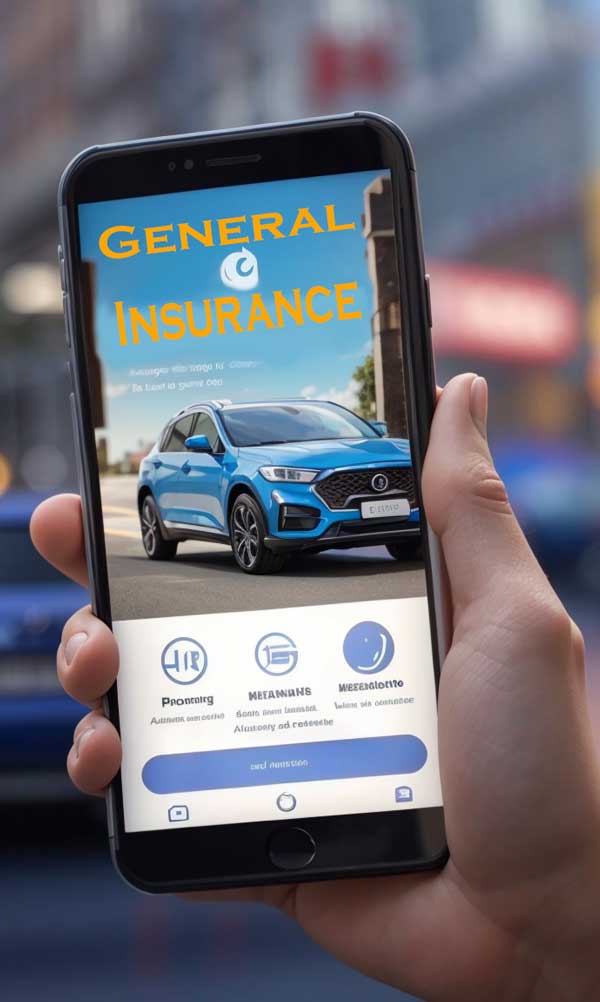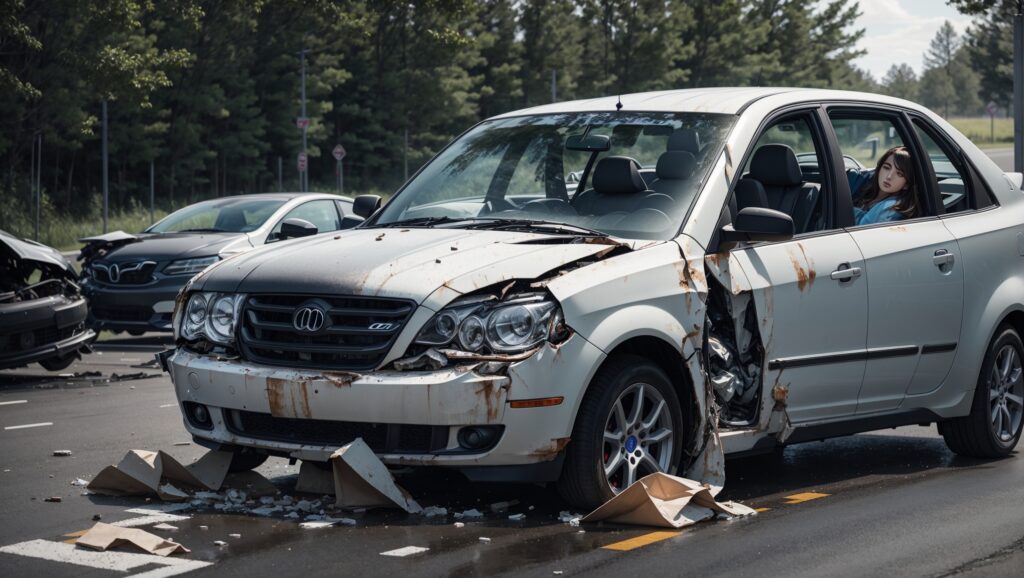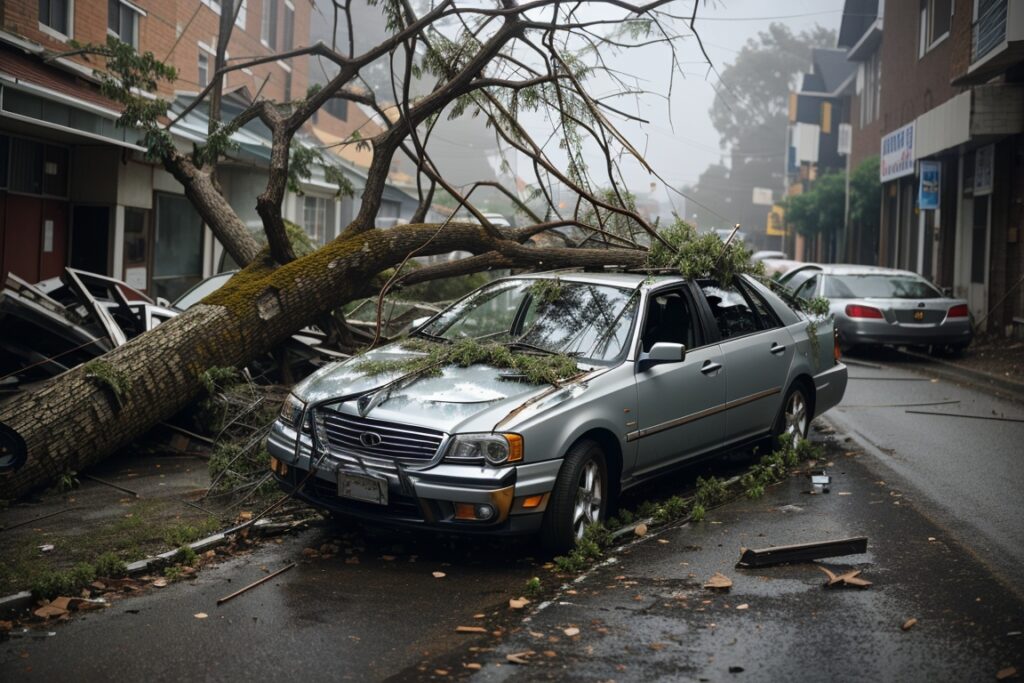General Insurance
Protection for life's unexpected turns
General Insurance
Having general car insurance is crucial because it protects you financially in case you get into an accident, damage your vehicle, or it is stolen. While the minimum liability coverage is required in most states, there are many additional coverages that can give you peace of mind and better protect you on the road.
General auto insurance is required in most states except New Hampshire. Most general car insurance policies will either have liability coverage, collision, or comprehensive coverage. Auto insurance is regulated at the state level. Each state sets its own insurance laws, including mandatory minimum amounts of coverage.

Types of General Insurance Coverage
Liability Insurance
- Bodily Injury Liability:
Pays for medical expenses and lost wages for people injured in an accident you cause. It also covers legal defense costs if you are sued.
- Property Damage Liability:
Repairs or replaces another driver's vehicle or property that you damage in an accident you cause.
$15,000 per person for injuries
$30,000 per accident for injuries
$5,000 for property damage
Collision and Comprehensive Coverage

- Collision: Covers repair or replacement costs when your car is damaged in an accident, regardless of fault. This covers collisions with objects like guardrails and rollovers.
- Comprehensive: Covers non-collision damage including weather events like hail or floods, fire, vandalism, falling objects, explosions, animal collisions, and theft.
Uninsured and Underinsured Motorist Coverage
Uninsured and underinsured motorist coverage protects you if you’re hit by a driver with little or no liability insurance.

- Uninsured Motorist Bodily Injury: Pays for your medical costs if an uninsured driver is at fault for an accident injuring you or passengers.
- Uninsured Motorist Property Damage: Covers damage to your vehicle caused by an uninsured driver.
- Underinsured Motorist: Kicks in when an at-fault driver has inadequate liability limits to cover your damages and medical bills.

Medical Payments Coverage
Medpay covers medical expenses for you and your passengers after an accident, regardless of fault. It may cover expenses not addressed by your health insurance, like co-pays and deductibles. Adding this coverage provides an extra buffer of protection.
Gap Insurance
Gap insurance fills the gap between what your vehicle is worth and what you owe if it's totaled or stolen. This can provide peace of mind if you have an auto loan, as standard insurance settlement checks are based on actual cash value, which may not cover the full loan balance.
Usage-Based Insurance
Usage-based programs use telematics devices or mobile apps to track driving habits like mileage, braking, speed, and time of day driven. Safe drivers can potentially lower premiums by sharing good driving data. These voluntary programs appeal to infrequent drivers or those with favorable driving behaviors.
Roadside Assistance
Roadside assistance provides perks like towing, tire changes, fuel delivery, lockout service, and battery jumps if you're stranded. It's nice peace of mind while traveling and can help avoid out-of-pocket costs for roadside help. This coverage often includes travel perks too like trip interruption reimbursement.
Rental Reimbursement
This covers transportation costs if your vehicle is inoperable due to an accident or repairs. It reimburses rental car expenses up to a fixed daily amount over a set number of days. Rental coverage is helpful if you need a reliable backup vehicle.
Personal Injury Protection
Known as "no-fault" coverage, PIP pays for initial medical costs for injuries to you and your passengers, up to the policy limits, no matter who caused the accident. It may also cover lost wages and funeral costs. PIP is required in states like New York but is optional in most.
Non-Owner Car Insurance
Also called named operator policies, non-owner car insurance provides liability coverage for drivers who don't own vehicles. It can cover rental cars, borrowed vehicles, company cars, or cars you own but have registered and insured in someone else's name. This convenience comes in handy for drivers who only need coverage periodically.
How To Choose the General Auto Insurance Policy Limits
Choosing limits that are too low can leave you financially vulnerable, while limits that are too high may result in paying higher premiums than necessary. Follow these tips to select auto insurance policy limits that provide sufficient protection without overpaying.
Auto insurance policies have separate limits for bodily injury liability and property damage liability. Bodily injury liability covers injuries to others caused by you or another covered driver, while property damage liability pays for damage you or another driver cause to someone else’s vehicle or property.
Typically, policy limits are written as three numbers, such as 100/300/50. The first number is the limit per person for bodily injury, the second number is the total limit per accident, and the third number is the limit for property damage per accident. So in this example, your insurer would pay up to $100,000 for each injured person, up to $300,000 total for all injuries in one accident, and up to $50,000 for total property damage.
Consider State Minimum Requirements
Most states require drivers to carry a minimum amount of liability insurance. Common minimum limits are 25/50/10, 50/100/25, or 100/300/50, but requirements vary by state.
Choosing state minimum limits will satisfy legal requirements, but may not be enough protection. If you cause an accident with severe injuries or property damage, minimum limits likely won’t cover all losses. Most experts recommend choosing limits higher than your state minimums.
Assess Your Assets and Risks
Also, think about your driving risks. Factors like frequent driving, long commutes, past accidents or tickets, and a high-performance car may indicate a higher chance of being in another accident. Opting for higher limits can help hedge against those risks. On the other hand, those with spotless driving records may be comfortable with lower or minimum limits.
Compare Quotes for Different Limits
Get quotes from insurers to see how your premium is impacted by higher or lower limits. Raising your limits significantly increases coverage but may only raise your premium a small amount. However, at some point the premium increase may not be worth the extra coverage. Look for the “sweet spot” limits that provide substantial coverage without an excessive premium increase.
Choosing Liability Auto Insurance Policy Limits

- $50,000 bodily injury coverage per person
- $100,000 bodily injury coverage per accident
- $50,000 property damage coverage per accident
For collision and comprehensive, limits equal to the actual cash value of your vehicle are recommended. For PIP insurance, states dictate minimum required limits (usually $5,000-$10,000).
How To Choose Your Deductible Amount
Deductibles typically range from $250 to $1,000 for collision and comprehensive coverage. Choose higher deductibles if you want to save on premiums and can afford to pay more upfront towards repairs or replacement if you have a claim. Go with lower deductibles if you want extra financial protection.
General Auto Insurance Quotes
- Provide the same coverage limits, deductibles, and driver information to each insurer. This allows for an apples-to-apples comparison.
- Get quotes from at least three insurers. Rates can vary significantly between insurers for the same coverage.
- Compare standardized quotes, not just advertised rates which may not reflect actual costs.
- Quote identical coverage limits and deductibles as your current policy. This shows you the going rate for your coverage.
- Look beyond the premium: consider coverage, limitations, exclusions and company reputation. The cheapest rate may not be the best deal long-term.
Key Factors Impacting Premiums
- Age: Drivers under 25 generally pay higher premiums due to lack of experience. Rates start to go down around age 25.
- Gender: Statistics show young male drivers tend to have more accidents than females, so young men often pay higher premiums. Gender is not a factor in some states.
- Marital status: Married drivers tend to get in fewer accidents, so insurance companies often charge them lower rates.
- Location: Insurance rates are based in part on the claim frequency and cost of repairs/medical care where you live. Urban areas cost more to insure than rural or suburban regions.
- Driving record: A clean record with no accidents, speeding tickets or DUIs results in lower rates. Even one ticket can increase premiums substantially.
- Vehicle: Insuring expensive vehicles, high-performance cars or vehicles with higher theft rates costs more due to increased collision/comprehensive risk and repair costs.
- Credit history: In most states, insurers perform credit checks and good credit often earns lower premiums.
- Mileage: Driving fewer annual miles lowers your risk exposure, which can lower premiums.
Finding the Best General Auto Insurance Provider For You
- Reputation: Check reviews and ratings from Consumer Reports and websites like BBB.org. Look for consistently high customer satisfaction.
- Complaint index: A low NAIC complaint index indicates fewer consumer complaints and issues compared to competitors.
- Financial strength: Choose a company with an A rating from rating firms like A.M. Best or Moody’s to ensure they can pay out claims.
- Discount opportunities: Find an insurer that offers multiple discounts that apply to you and your vehicle.
- Customer service: Look for outstanding customer service scores and friendly, helpful customer service representatives.
General Insurance Discounts
Insure your home or other assets along with your car for multi-policy discounts.
Some companies give discounts for driving less than a set number of miles per year.
Paying your 6-month or annual premium upfront avoids monthly fees.
Insurers favor customers with higher credit scores.
Some jobs like teachers, first responders, and engineers qualify for breaks.
Alumni, professional, military, and other member discounts can add up.
Many companies reward completing safety and defensive driving courses.
Anti-theft devices, airbags, and anti-lock brakes mean savings opportunities.
Analyze if you really need things like rental reimbursement or roadside assistance.
If you have solid health insurance, you may be able to skip Medicaid.
Telematics programs cater to less frequent, safe drivers.
Cut your mileage and parking risks in dense areas by limiting commutes.
Some insurers offer breaks for allowing electronic vehicle tracking.
Newer vehicles with the latest safety tech can garner you a lower rate.
Go for a car with excellent crash test results.
Hybrid and electric cars are cheaper to insure according to some firms.
Loyalty and an ongoing clean record can score you discounts.
Don’t be shy to inquire about every possible money-saving opportunity.
Things like alarm systems can qualify you for anti-theft discounts.
Club membership with AAA, a university alumni organization, or a credit union may unlock savings.
Avoid financing, as collision and comprehensive are required for leased and financed vehicles.
Cutting back on driving and car ownership completely can save you big.
Pick higher deductibles and skip optional coverage to limit premiums.
It may not be cost-effective for a vehicle worth under $1,000 for example.
Odds are you need more than your state’s minimum liability requirements.
New ways to save emerge all the time within the insurance industry.
Traffic violations and claims raise rates, so drive safely.
Get multiple quotes consistently every renewal cycle to stay on top of savings.

With this extensive overview of general insurance, you now understand all the key components of getting quality coverage. It’s super important to choose adequate liability limits and consider critical add-ons like uninsured motorist coverage.
Always check with your insurer and local laws to make sure you have the right protections in place. While getting the right coverage at the lowest cost takes some work, safer driving and smarter shopping pay off. Compare general auto insurance quotes where you live. To get started, enter your zip code and fill out an application online. Save more on the general insurance you need.